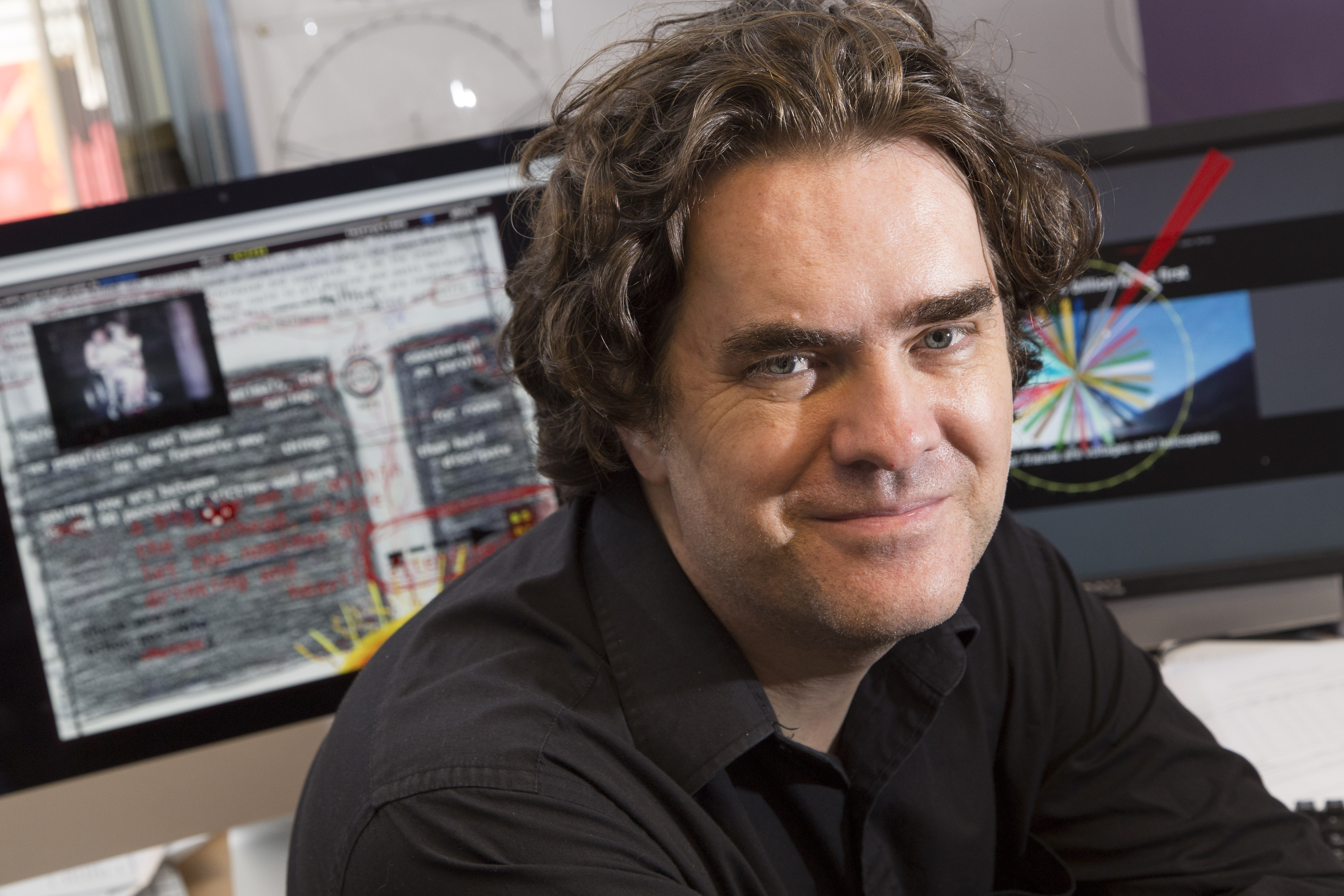Griffith University senior lecturer Dr Jason Nelson is leading the world in a growing creative field that merges ultra-modern technology and an ancient form of literature.
As rapidly advancing interactive technology affects all aspects of contemporary life and gives rise to bold new forms of expression, the award-winning Dr Nelson’s digital poetry has been exhibited in galleries throughout the world and brought him an online audience of millions.
The American-born former city planner discovered his vocation when struck by the potential of combining the mapping software work he undertook by day with the traditional poetry he was writing at night. Now every new technology is a possibility for Dr Nelson’s technical, artistic and literary exploration.
And despite the reservations of poetry purists, he believes digital poetry is the future of the form and urges traditional poets to give it a try.
“Back in 2007-08, I was one of the first people to combine poetry with game engines and it just exploded from there,” said Dr Nelson, creator of the extraordinary secrettechnology.com art portal and hugely popular flash platform games such as Game, Game, Game and Again Game and I made this. You play this. We are Enemies.
“Tens of millions of people were sharing it, playing online, and there was strong media coverage too, with articles from Russia, Japan, Brazil, India, Australia and the US. Digital poetry was being embraced as a form of poetic expression ideal for our digital age.
“The response demonstrated to me that people always wanted to experience and explore poetry. They just needed a way in that they understood and with which they felt comfortable. Game engines fitted the bill.”
Dr Nelson came to Griffith in 2004, joining the School of Humanities to lecture in Digital Writing and Creative Practice. This year he joins the Griffith University Queensland College of Art at South Bank, charged with strengthening and growing the Digital Arts and Writing areas.
“I find my students as eager to embrace this concept as I am to share it. I am trying to teach them to use software imaginatively, to be prepared for change, to be malleable and inquisitive and, above all, creative.”
Dr Nelson revels in the diversity of modern technology to construct variously challenging, whimsical, provocative and powerful digital concepts in which sound, image, interfaces, website codes and words are both crucial and complementary.
“I revel in error, in play. I like hiding things in my work, secret links, surprise pages and roads with dead ends. Digital technology allows you to do that,” he said.
“However, digital poetry is not about showing how skilled you are on a computer. The poem is still the most important element, the beating heart of any concept, and success is best measured by the experience of the poetry, not the mastery of the technology.”
Recently, Dr Nelson’s work has featured in galleries in New York, Paris and Edinburgh and has been archived by the US Library of Congress. However, his greatest audience by far is online and he acknowledges Griffith University’s willingness to support a concept that he admits some find strange and perhaps even subversive.
“Digital poetry doesn’t bow down to institutions or expectations, but Griffith clearly recognised the potential of this form of expression and has given me fantastic support,” Dr Nelson said.
“Maybe I am subversive, but I also believe that poetry, no matter how it is presented, is a work of the imagination. That is a binding truth that spans centuries.”
